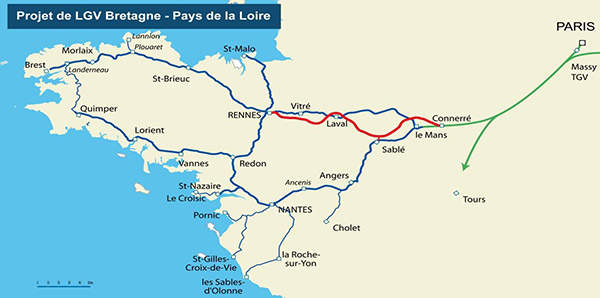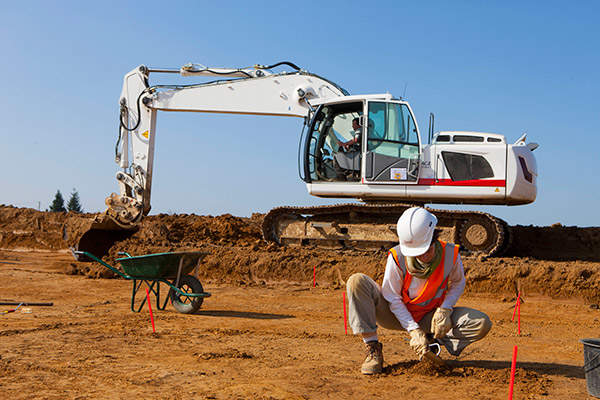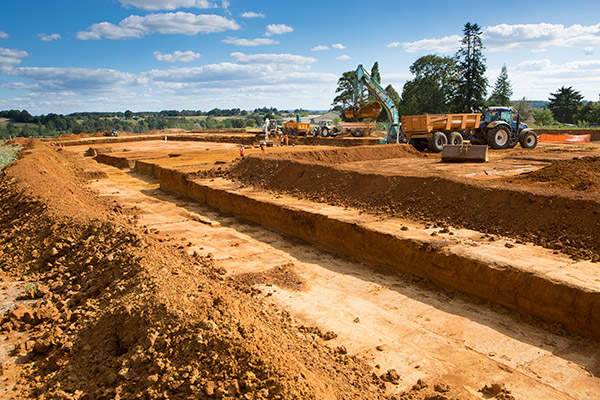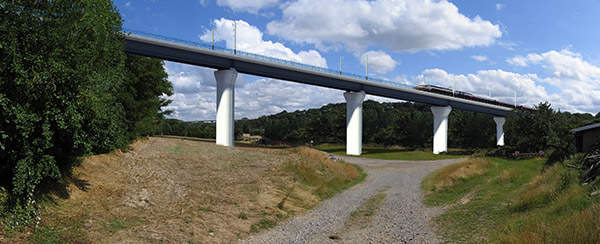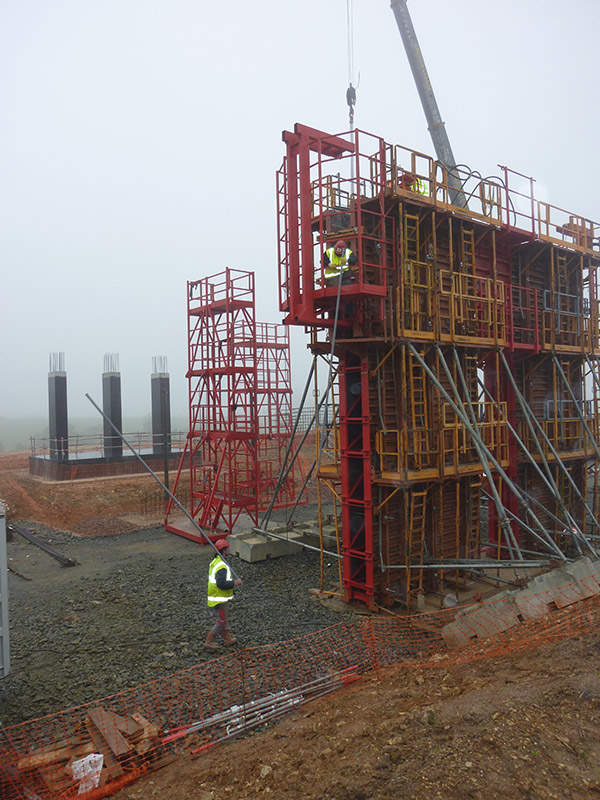
The Brittany – Loire Valley high-speed line, also known as BPL, has been under construction since July 2012. The new high-speed line will be 182km long, connecting the cities of Le Mans and Rennes. The BPL will extend the existing 180km high-speed line between Paris and Connerré, which was built in 1989.
The €3.4bn ($4.41bn) BPL project is being developed by French construction company Eiffage through its subsidiary Eiffage Rail Express (ERE). It is the second high-speed link project to be developed through public private partnership (PPP) in France, after the South Europe Atlantic (SEA) high-speed rail project.
Upon its completion in 2016, the BPL will allow for the operation of 320km/h TGV high-speed trains. It will reduce the journey time between Paris and Rennes by 37 minutes. Besides, the BPL will significantly improve the access of cities in the north western region of France, such as Laval, Angers, Nantes, Brest and Quimper, to the high-speed rail network of the country. The project is expected to generate 10,000 jobs during its construction phase.
Brittany – Loire Valley rail project background
The BPL is one of the major projects included in the European High-Speed Rail Network programme and the Grenelle Environment Act of 2009, which entails the construction of 2,000km of high-speed railway lines in France by 2020.
The project will set up 214km of new railway lines including 182km of high-speed lines and 32km of connecting lines to the existing lines. The project covers 2,100ha of land across three departments of France, which include Ille-et-Vilaine, Mayenne and Sarthe.
The preliminary studies for the project were carried out by Réseau Ferré de France (RFF), the state-owned rail infrastructure manager, during 1996-2001. Land acquisition process was started in 2005. The project was declared in the public interest in October 2007.
The call for bids to build the project through PPP was solicited by RFF in 2008. Eiffage was selected as the preferred bidder in January 2011.
Related project
Alstom Euroduplex Very High Speed Train, France
Euroduplex is the third generation of TGV (Train à Grande Vitesse) very high speed trains being manufactured by Alstom. It is claimed to be the only double deck very high speed train which can meet the operational requirements of various European rail networks without any major changes in infrastructure.
Contracts and funding for the BPL project
The partnership contract between RFF and Eiffage was signed in July 2011. CBR (La Compagnie Benjamin de Rothschild) acted as the financial advisor to Eiffage.
Eiffage will finance, design, build and maintain the infrastructure of the BPL project for 25 years on availability payment model.
The PPP contract is mostly funded by public sector resources. RPF is contributing 42.8% of the project cost. State and local authorities are contributing 28.5% each. The European Union provided €11m ($14.3m) for the preliminary studies of the project.
Eiffage will finance 30% of the costs through bank loans and equity. The loans will be paid back through Eiffage’s standard dues from RFF and the government over 20 years of operation of the line.
The project will also receive €1bn ($1.3bn) funding from 12 commercial banks, which will include €853m ($1.1bn) from European Investment Bank (EIB) alone.
Infrastructure and signalling
The new high-speed line will pass through seven covered trenches and ten viaducts. The track will consist of concrete sleepers and rails laid on a layer of ballast. The line’s construction is expected to require a 900,000t of ballast, 820km of rails and 680,000 sleepers.
The trains on the BPL will run on electric power. The power will be supplied from the French electricity transmission system Réseau de Transport d’Electricité (RTE) and will be redistributed by substations via catenary cables. The power infrastructure will allow for a potential speed of 350km/h.
While the 32km of conventional lines (connection to the existing line) will be equipped with ERTMS Level 1, the signalling system of the 182km new high-speed line will be of ERTMS Level 2, which means that the new high-speed line won’t have any line side signals. Radio Block Centres (RBC) and Eurobalises will be installed along the line to allow direct display of continuous information right inside the cab using Global System for Mobile Communications – Railway (GSM-R).
The signalling of the line will be controlled from the switching station located at Rennes.
Contractors involved with the BPL high-speed rail project
France-based Ansaldo STS has been awarded a contract worth €62m ($80.5m) by Eiffage to provide the signalling system for the BPL.
Tata Steel was awarded a €50m ($65m) contract by Eiffage to supply about 50,000t of rail for the BPL project.

